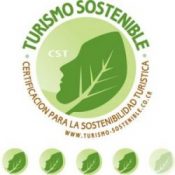Around 1957, a young man by the name of Fernando Cruz arrived to Punta Uvita. He was accompanied by his wife Leonor and son Carlos Fernando (Cai Cruz). The family settled near the entrance to Punta Uvita, known then and for many years later as, “La Pachanga” (The Party). The family started buying properties and therefore acquired a large amount of land, a little less than 900 hectares. The principal objective of the Cruz family was to create a large hacienda and cattle farm called Hacienda Bahia as well as an airplane business and continue with the vision to develop other businesses or at least have a tranquil and safe refuge.
Uvita in the 1960s & 1970s
By 1962, the family passed away and all of the Hacienda Bahia was under the control of son, Cai Cruz. At the time, Cai Cruz, did not have the sufficient capacity to control his families assets. One day during a flight in one of his families planes there was an accident near the mountain summit called Kamuk, on route to San Jose, and Cai Cruz was killed. Afterwards, the state banks took control of Hacienda Bahia. Later, during the 60s and 70s, ALCOA the world’s current leading producer and manager of primary aluminum, was attempting to excavate from San Isidro de General – Perez Zeledon the primary material for aluminum products, Bauxite. In a larger plan that involved ALCOAs purchase of Hacienda Bahia, was the development of a road between San Isidro General – Perez Zeledon and Uvita Bahia Ballena and the eventual construction of a small port at Punta Uvita for the exportation of Bauxite and other products. ALCOAs development plans were highly viewed as anti-patriotic and the pressure of Costa Rica’s largest student strike on April 24, 1970 combined with ecologist lead strikes helped lead to the ending of the projects.
Uvita in the 1980s
Later in 1980 the Hacienda was invaded by more than 90 families, the majority of them coming from the Aguirre county – Playa Matapalo to Quepos. Afterwards, the Institute of Agrarian Development, bought and parceled lands, which gave form to the community we know today as Uvita Bahia Ballena, Osa, Costa Rica with more than 800 inhabitants, and a student population of more than 200.





Leave a Reply